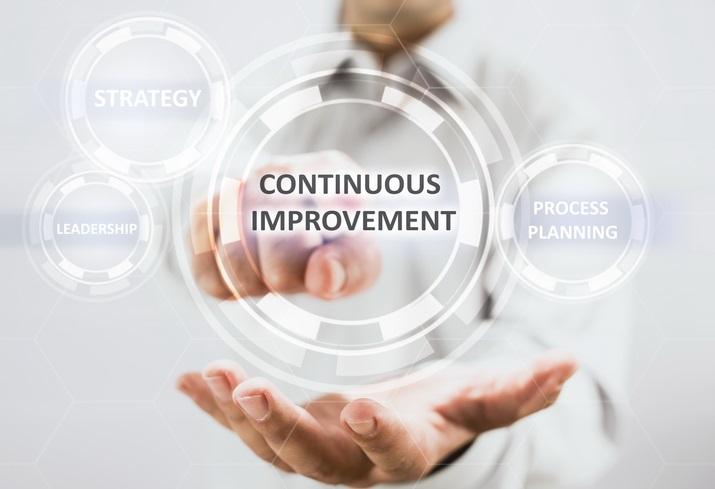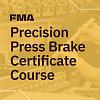Principal
- FMA
- The Fabricator
- FABTECH
- Canadian Metalworking
Categories
- Additive Manufacturing
- Aluminum Welding
- Arc Welding
- Assembly and Joining
- Automation and Robotics
- Bending and Forming
- Consumables
- Cutting and Weld Prep
- Electric Vehicles
- En Español
- Finishing
- Hydroforming
- Laser Cutting
- Laser Welding
- Machining
- Manufacturing Software
- Materials Handling
- Metals/Materials
- Oxyfuel Cutting
- Plasma Cutting
- Power Tools
- Punching and Other Holemaking
- Roll Forming
- Safety
- Sawing
- Shearing
- Shop Management
- Testing and Measuring
- Tube and Pipe Fabrication
- Tube and Pipe Production
- Waterjet Cutting
Industry Directory
Webcasts
Podcasts
FAB 40
Advertise
Subscribe
Account Login
Search
The role of the lean strategy
In the long run, lean isn’t effective without an overarching strategy
- By Jeff Sipes
- December 7, 2018
- Article
- Shop Management
You are several months into your lean journey. You understand the opportunities for your business, have run a few tactical projects or kaizen events to get some early traction, and people are starting to gain confidence that this lean “thing” is going to make a difference.
Now it’s time to create a plan to take a more strategic approach. A good lean strategy helps you turn a checkers game into a chess match.
Why Take the Long View?
You take small, measured steps at first. That’s fine when starting on a lean journey, but it’s disastrous for the long term. A piecemeal approach turns into a game of whack-a-mole. You have lots of action, but nothing ties all those actions together. If nothing changes, your lean investment will not deliver the returns you should expect.
Over the long term, you need to develop a lean strategy that elevates the lean journey to a senior management or leadership role. You tie the lean strategy to your operations and business strategy. Lean becomes a mission-critical part of the overall way you conduct business. You can link lean improvements to the direction set by the leadership. In smaller manufacturing companies, that linkage might appear obvious, but don’t underestimate a lean strategy’s power to provide consistent guidance and alignment.
Think of your lean strategy as an investment portfolio. The investment portfolio looks past the immediate horizon and focuses on the long term. Depending on your needs or goals, the portfolio will have a mix of short-term and long-term investments. There will be some growth stocks and some dividend-paying investments. Some are risky and some are safe. Over time the investor modifies the investment strategy as conditions change, but not so frequently as to create a “nervous” strategy.
Your lean strategy will exhibit some of these same characteristics. It will provide direction, be a mix of different initiatives, and help determine if resources are being used wisely.
Different Perspectives on One Strategy
Regarding the time horizon, the lean strategy should provide a two- to three-year guidance, sometimes more or less depending on the length of your product cycles and lead times. A manufacturer that measures lead times in years (designing and building complex products, for example) would approach the lean strategy differently than the manufacturer that measures lead times in days or weeks.
Put yourself in the shoes of different people at various levels within your company, from the owner to the front-line employee. What would each want from a lean strategy? Your answers will help define the elements of the strategy.
Company Owners. Because they essentially fund the lean journey, owners need to see a plan that demonstrates rational behavior, acceptable returns, and value for external customers. If the business is in financial trouble, then the lean strategy should outline clearly how the lean effort will help remedy the company’s situation.
Leadership Team. This group may consist of core business process owners, like the chief financial officer, vice president of manufacturing, or the vice president of quality. Although they represent specific functions, they must understand that they are jointly accountable for the business’s performance. As such, they need to operate “horizontally,” so they are looking for how a lean strategy will help them break down silos and get different people to operate as a well-oiled machine.
Managers and Supervisors. These people want guidance on priorities, what tactical plans to create, and what the pace for improvement needs to be. They will be primary players in achieving and keeping momentum, determining where and when initiatives take place, and being the gatekeepers in using the company’s resources as they execute lean activities.
Front-line Employees. They want to know that there is a plan, that the company is committed to employee involvement in the improvement process, and that they will have a voice in how improvements are generated and executed. They want to have confidence in the organizational structure above them.
Common Elements of a Lean Strategy
A lean strategy is not a cookie-cutter, fill-in-the-blank proposition. Your lean strategy will look a bit different than the manufacturer’s down the street. Although the details will differ, most lean strategies have a few common elements.
One element focuses on the external customer. The strategy will help clarify how you address the voice of the customer as you progress along the lean journey. It will define the type and frequency of customer contacts as part of your voice-of-the-customer research. Do you treat all customers the same, or is there some sort of stratification that results in multiple ways to address multiple customer segments? This element may relate directly to your business strategy.
The lean strategy also needs to define the pace of improvement. Will you be a tortoise or a hare? If you go at the tortoise pace, you’ll bring the organization along the lean journey methodically. It will take time for people to learn, but they’ll eventually turn lean into a perpetual improvement machine.
On the other hand, a company in financial trouble needs to generate results quickly to keep the company viable. In these urgent cases, you’ll be a hare. You’ll work on the improvements that generate results now and lay the foundation for a methodical approach later.
Another common lean strategy element involves scope. Where will the improvements be made? Will you focus on the shop floor or take a broader, end-to-end approach where everything from sales to engineering to aftermarket to finance is within the scope? The answer may evolve over time as your organization gets more mature in developing and executing its lean strategy.
Also address how you will invest in your people. Does your company recognize training and development as important to the business, or do you look at it as a necessary evil and invest only the minimum to get by? The answer to this question says a lot about how you value your employees—and your employees will be looking to see how you answer this question.
Finally, a good lean strategy should define your destination. What does your company look like as it evolves through the lean journey? Are you going to have a world-class operation? Will your employees be empowered to make improvements? Will you drive the business with effective metrics that are both outcome- and upstream-focused? (For example, will greater uptime at a certain upstream machine lead to an outcome of shorter lead times?) Will this be a smooth operation, or will it jerk along in fits and starts? This section of the lean strategy should link directly to your company’s operating principles.
We have covered only a few potential elements you might include in your lean strategy. As various people at different levels of the company—owner, leaders, managers, front-line employees—begin to draft your lean strategy, you will identify topics that are important to your business.
How to Use Your Lean Strategy
The lean strategy comes along after you have done some preliminary work, have gained some traction, and have genuinely gotten people’s attention. Now you can put structure to the lean journey. But a fair question is, “What does the lean strategy do for my company?”
For starters, it gives improvement efforts structure. If you deploy and communicate the strategy effectively, it essentially will be your lean road map, useful to everyone from the top floor to the shop floor. It will hold the organization and its people accountable.
An important discipline, accountability keeps everyone aligned. You should periodically assess progress. If part of the organization is not performing according to plan, then follow up to find out why. If someone is being an anchor that slows progress, deal with it.
Stabilize the day-to-day tactical lean efforts by tying them back to your lean strategy. You should be proud of getting your organization beyond the initial steps of a lean journey. But the easy work is behind you, and now it is time to get serious.
The lean transformation is nigh. People may be excited, or they may be laying low to see if it will pass. In either case, a well-developed lean strategy provides guidance that will help everyone—from owners to front-line employees—understand that there is a method to the madness.
Jeff Sipes is principal of Back2Basics LLC, 317-439-7960, www.back2basics-lean.com. If you have improvement ideas you’d like to read about, email him at jwsipes@back2basics-lean.com or Senior Editor Tim Heston at timh@thefabricator.com.
About the Author

Jeff Sipes
9250 Eagle Meadow Dr.
Indianapolis, IN 46234
(317) 439-7960
subscribe now

The Fabricator is North America's leading magazine for the metal forming and fabricating industry. The magazine delivers the news, technical articles, and case histories that enable fabricators to do their jobs more efficiently. The Fabricator has served the industry since 1970.
start your free subscription- Stay connected from anywhere

Easily access valuable industry resources now with full access to the digital edition of The Fabricator.

Easily access valuable industry resources now with full access to the digital edition of The Welder.

Easily access valuable industry resources now with full access to the digital edition of The Tube and Pipe Journal.
- Podcasting
- Podcast:
- The Fabricator Podcast
- Published:
- 05/07/2024
- Running Time:
- 67:38
Patrick Brunken, VP of Addison Machine Engineering, joins The Fabricator Podcast to talk about the tube and pipe...
- Industry Events
World-Class Roll Forming Workshop
- June 5 - 6, 2024
- Louisville, KY
Advanced Laser Application Workshop
- June 25 - 27, 2024
- Novi, MI
Precision Press Brake Certificate Course
- July 31 - August 1, 2024
- Elgin,
































